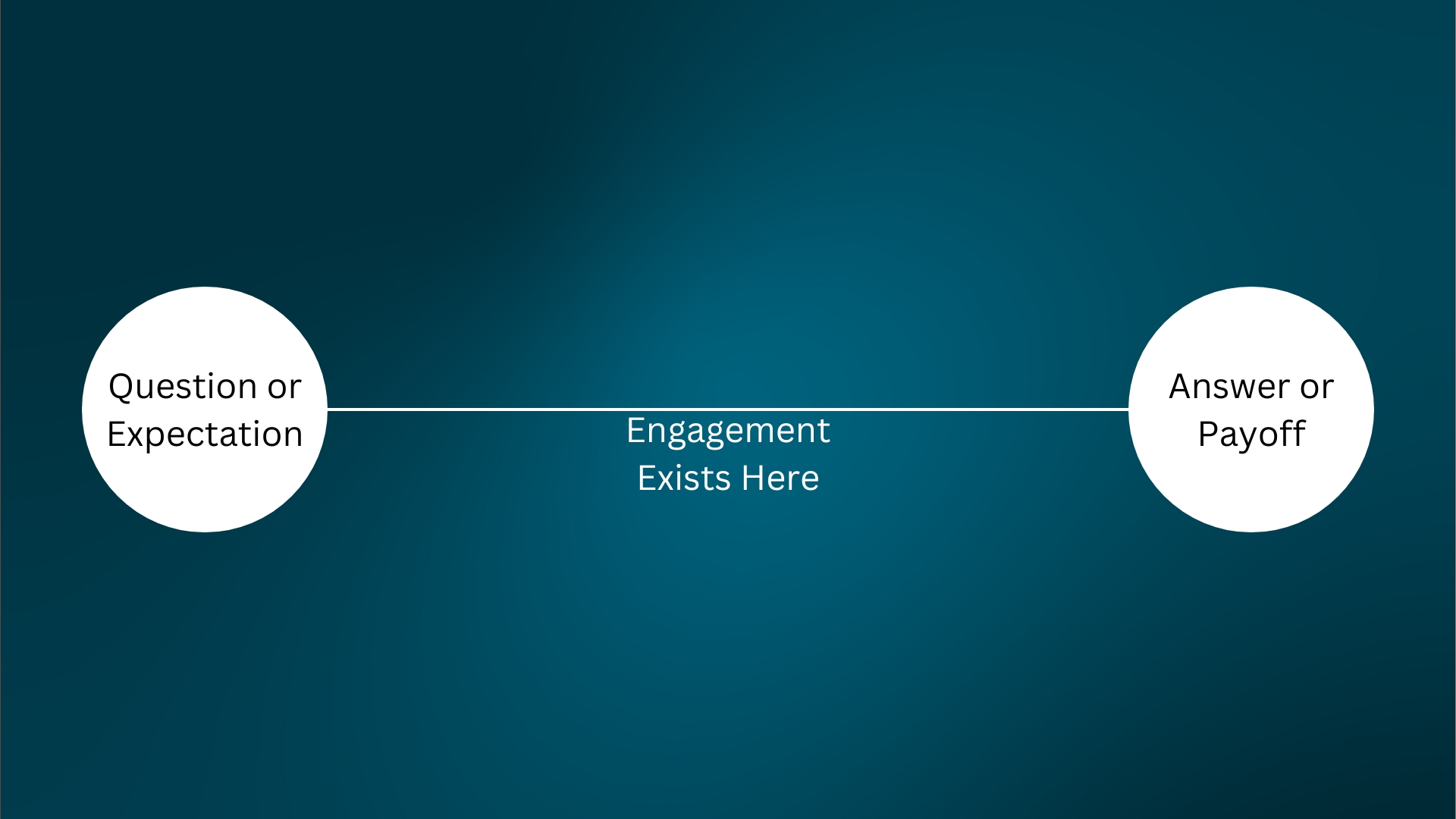Storytelling For Beginners - Part 2
 Welcome to part two of the Storytelling for beginners series.
Welcome to part two of the Storytelling for beginners series.
The Secret to Engagement
The secret to storytelling engagement is… wait for it, wait for it… wait for it… I bet you are thinking “Oh come on, just tell me already!” If you are, then my evil plan to illustrate the concept worked, the answer is tension.
Tension is the space between two opposing forces. It is when the audience doesn’t know the answer to a question in your story or the reasons why something is happening or what is about to happen. The secret of suspense lies in how good you are at keeping secrets. Hang on to a key fact for as long as possible, give hints about it as you, but don’t reveal everything at once or too soon.
Storytelling is one of those fields where less is more.
- One murder can be scarier than a mass slaughter.
- One prayer can provide the emotional high point of an entire adventure.
Being able to maintain tension for as long as possible without losing your audience in other ways will result in more engagement, but you also need to take your audience’s time seriously, after all they are doing you a favor by listening to what you have to say, so it is in your best interests not to disappoint them. Make it easy for people to listen and to follow along.
Always try to create anticipation and try to understand how long you need to keep the tension before losing the audience
How to Create Tension
 Anticipation is create when the storyteller poses a question or expectation and then waits for an amount of time before delivering the answer or payoff. A good example of how to do this is by inserting a pause during your speech.
Anticipation is create when the storyteller poses a question or expectation and then waits for an amount of time before delivering the answer or payoff. A good example of how to do this is by inserting a pause during your speech.
In the space after a question, hope, expectation or doubt is created. Allow the time and space for your audience to become engaged.
So far I have been talking about storytelling in general, but in my previous article I mentioned that storytelling is at the center of our lives.
Tension When Presenting
When presenting you have to start by knowing your audience. Is it a board of directors or people in a theatre or is it a YouTube video or content for an Instagram feed? Also as important is to know your medium and its rules. What works on YouTube doesn’t work on Instagram or in a live presentation.
When presenting it is recommended to have a 3 act structure.
- Tell me what you are going to tell me: This is your hook or as we discussed, your why. Why are you speaking to your audience and why should they listen to you?
- Tell them: This is where you go all out with your content or business case. This is when you focus on what the benefits are to the points you are bringing. Be logical about the message you are giving.
- Tell them what you told them: Reiterate in your main points. This is where you tell the audience reasons to believe in your ideas. How can you backup what you just said?
The Domino Effect
- Stories have a beginning, middle and end.
- Stories are always in motion, if there is something in the story that doesn’t move the audience to the next point, then leave it out.
- Everything that happens in a story has a cause and effect, nothing in a story happens due to random chance.
- People need to know when the story is over.
Awake emotion in people, so that they can connect with the story.
Tension in Interviewing
You can reveal who you are through storytelling. Put the buzzwords you found in the job application into a story that you can tell, so that you can connect with your interviewer. In other words, show don’t tell and like in our previous point, your stories can invoke emotion in your interviewer.
About Characters
You can have a great character and can build tension by making the character want something they cannot immediately have.
For example, your character is working at the office and they really want to eat a piece of cake they left at home and as they go through the day they are afraid someone else is going to eat that cake.
Tension creates active characters that make decisions: “Do I get out of work early, so I can my cake or do I wait until the end of the day and risk someone else eating the cake?”
Good characters always have to make choices.
Humor and Twists
People love humour and good jokes in a story. Clever one liners are perfect and then follow with a plot twist. A good plot twist challenges or fools the audience. Make them think that they knew what was coming with an apparently predictable story, but then throw something unexpected at them.
However, do this in a believable way. A good story must make perfect sense, even if you are telling a tall tale or a fiction or fantasy story. The fictitious world you are grating must be rooted in some kind of reality that follows certain basic rules consistently for it to make sense.
Make Your Point, But…
Stories have two main purposes.
- It must be entertaining.
- Deliver the message that you wanted to convey or make the point you are trying to make. When making your point, be subtle, people don’t like the be preached at.
And this is it for this second part, if you made it this far, thank you so much for reading and I hope I was able to give you valuable insights. Look forward to the final part of this series in storytelling.